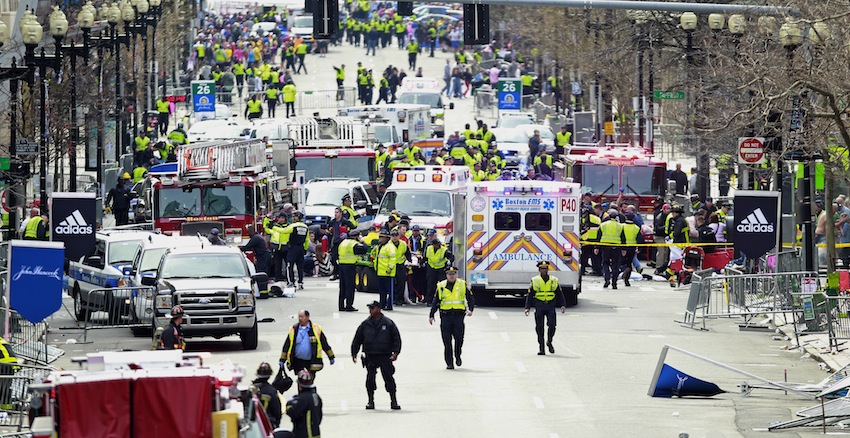Boston Police: Report About Marathon Threats Was ‘Annual Internal Warning’
Boston Police clarified Thursday that a threat assessment report outlining potential hazardous situations or attacks at the Boston Marathon—and pointing out places or vulnerable locations along the race route—was an annual “internal warning,” and not a warning about preconceived threats.
“There was no mention of a specific or credible threat detailing an imminent assault on the 2013 Boston Marathon, and to confuse an internal warning outlining potential threats with a specific threat would be misleading,” according to a statement from police. The Joint Special Event Assessment report came out five days before the blasts went off on Boylston Street.
The report, which is prepared annually by members of the Boston Regional Intelligence Center, the Massachusetts State Police, FBI, Commonwealth Fusion Center, Transit Police, and EMS, said that there was no immediate public threat at the hands of international or domestic terrorists, and pointed out locations like the finish line as places for officers to keep an eye on. The purpose of the report is to outline “potential areas of concern” for support personnel who provide security at the Boston Marathon and other major city events to pay close attention to.
According to officials, this year’s assessment stated that the only big issues that police and emergency personnel expected were large crowds, traffic, and heavy drinking.
The report said:
At this time there is no credible, specific information indicating an imminent threat to the 2013 Boston Marathon from international terrorists, homegrown violent extremists, domestic violent extremists, or malicious cyber actors. Furthermore, there is no credible, specific information indicating an imminent threat to the 2013 Boston Marathon from individuals intent on using weapons of mass destruction.
The announcement about the document came hours after Boston Police Commissioner Ed Davis met with members of Congress to discuss the lack of communication between federal and local officials about information and investigations into one of the bombing suspect’s past. Davis told a congressional board that he would have liked to have known about certain details about activity conducted by Tamerlan Tsarnaev, both online and in his home country of Chechnya, when he was being vetted by FBI officials in 2011.
Police said the language in the report about explosive devices is “standard language that is included to focus officer’s attention to potential vulnerabilities,” and nothing more. “The document produced this year was similar to last year’s document for the same event. The language is used as a guide for police officers and also to justify enhanced security measures that were put into effect in the 2013 Boston Marathon, such as bomb sniffing dogs,” police said.


